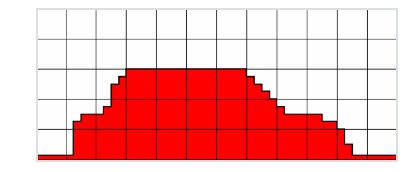By Gary Elinoff, contributing writer
Circling around a city street looking for a parking space is a frustrating experience for anybody, so what could possibly be more wasteful and exasperating? Circling around in a parking garage looking for a parking space — that’s what! — especially after you’ve paid good money for the privilege.
Why car-counting systems can get it wrong
The classic method of determining the number of cars parked in the facility depends on a sweet old bit of engineering called induction loop sensing. In a manner similar to that of a metal detector, the sensing unit includes a wire coil fed with an AC signal. If the metallic form of a car passes close to the coil, it produces a magnetic field that will, in turn, be detected in a second coil within the sensing unit.
This setup is doubled, and the direction in which the car is moving can be determined by which detector gets triggered first. Many garages also have similar setups for each floor and even for each individual space. In this manner, not only can the total number of cars in the garage can be counted, but also a floor-by-floor and even a space-by-space breakdown can be determined.
Sounds pretty solid, so what can go wrong? When it gets busy, cars tend to tailgate each other, traveling bumper-to-bumper. The system can’t determine if one, two, or even three cars have entered — or exited. Mistakes compound, and the count of cars becomes more like guesswork.
Ultrasonics to the rescue
One way of avoiding any confusion is not to try to detect when a car enters or exits but to simply ascertain whether or not a car is or is not occupying a space. An ultrasonic signal can be flashed onto the parking space itself. If a vehicle is present, a signal is reflected back and detected in much the same manner that radar can detect a ship or a plane.
Indect USA, for instance, provides a system that deploys a sensor for each individual parking space. There is also a powerful green LED that can inform customers at a distance of the availability of a free space, a tremendous advantage for busy drivers. While parking systems based on the venerable induction loop may be going the way of the vacuum tube, in this case, the replacement technology will not be inexpensive. According to Dale Fowler, Director for Indect USA, the cost for this convenience can run from $300 to $500 for each parking space.
But ultrasonics can also be used as a more direct replacement for the induction loop. With a little processing, an ultrasonic rangefinder can be used to detect cars passing a target point, determining which way a car is going, either in or out of a parking space or into or out of the parking facility itself. At the strategic point, two ultrasonic sender pairs can be installed above the vehicle pathway at a slight distance from each other. They will be programmed to measure the empty space to the floor. If a car is present, a pattern such as that illustrated below is generated.

Image Source: Swarco.
An image of this sort is generated by Swarco’s Ultrasonic Directional Sensor 300. Not only is it impossible to miscount the number of cars, but the vehicle’s direction is apparent. This approach promises to solve the limitations of inductive sensing at garage entrances at a lower cost than individual space monitoring. Either way, parking monitoring will become more accurate, and all that’s left is a trade-off of cost versus driver convenience.
Advertisement
Learn more about Electronic Products Magazine





